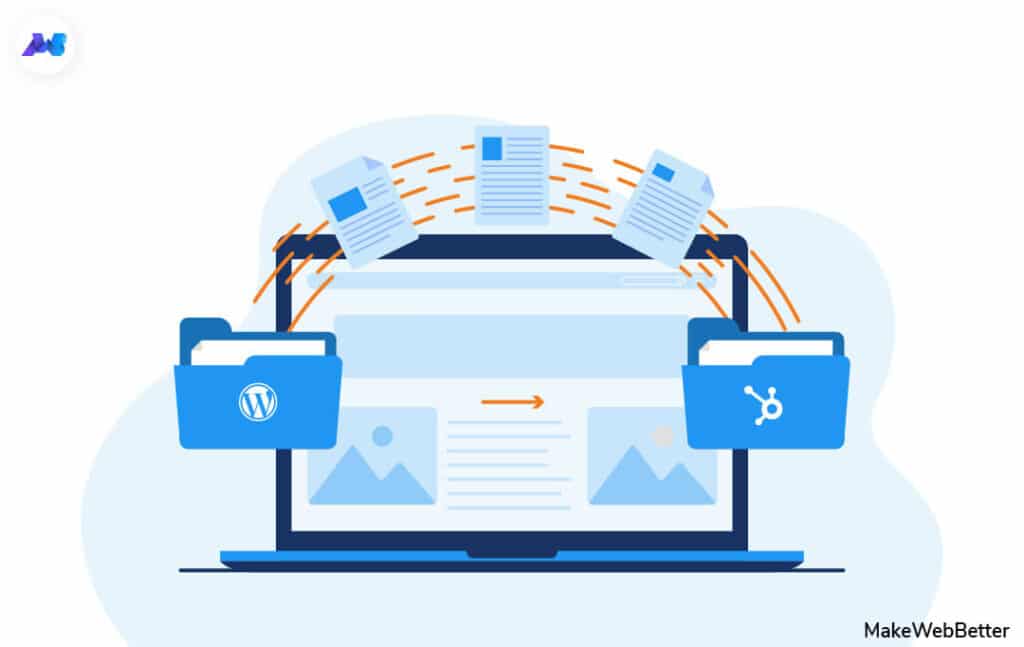Content management systems are an appealing choice for businesses to run their own website. An established CMS like WordPress, HubSpot or Drupal is reliable and easy to use. The modular principle makes it easy to add new content and even without a dedicated content department, the page can be kept up-to-date. Plug-ins also allow more flexibility and special functions such as online stores.
As easy as it is to choose a CMS, switching can often seem daunting - but our guide shows you that migrating from WordPress to HubSpot can be quite simple.

Why switch - this is why HubSpot is #1 in marketing
WordPress is not only the most popular content management system the world, 40% of all (!) websites are hosted via WordPress. That speaks for itself.
However, HubSpot is a CMS that is especially popular for marketers. Here the Easy integration of content publishing, analysis and optimization. Do you want to optimize your site especially for Marketing and improve your market share continuously, quickly and easily, HubSpot is an attractive alternative. This is also because the CMS, which was released in 2006, offers many of these Performs steps automatically and campaigns Directly managed can be.
Content and marketing are thus combined here in a single convenient step. The built-in optimizer about can blog posts from your content marketing Optimize automatically and does not require an additional plug-in.
If you change the content of a post, the optimizer keeps pace and your post remains SEO relevant.
This management, which does not consider search engine optimization as an additional step of hosting, but directly includes it in the content creation, is also what makes HubSpot unique. This also applies to often neglected side shows like internal linking, which is automated here - compared to WordPress, this makes content optimization much more convenient.

And not only for you, but also for your customers. They will not notice anything about the merged backend, but personalized marketing and personal addresses take your online marketing to the next level.
Cost is also a factor, of course, and while WordPress is often cheaper to get started, HubSpot includes features like SSL or WAF certificates that larger sites need.
Migration from WordPress to HubSpot explained in practice
The roadmap
Even before you sit down to your current and your future CMS, you should create a roadmap regarding the migration. This includes not only the content you want to move with your new site, but also current pages and themes you need.
Like moving from house to house, this moment is perfect for taking stock of the situation and the Sorting out content that is no longer current. This way, the reboot is not only optimized towards your marketing, but also declutters your website.
To do this, on the one hand you should use the Analyze strengths and weaknesses of your current site, but also create an outline for the future page.
The web pages of your website
Next, you should start thinking in terms of categories. This will help you choose and design the theme and keep your site in a connected user interface where Visitors quickly find their way around and that your Corporate Identity exudes.
Categories include homepage, landing pages, product pages, contact, about us, and blog posts. Don't just plan here with the page you'd like to have right after the migration, but also take a look into the crystal ball: What do you want your page to look like in six months, in one year, in two years?
The list
With these new categories you can redistribute the content to be migrated. For smaller sites this is not a problem and you can easily change CMS with few pages.
Larger sites, on the other hand, require more planning (and an Excel spreadsheet to match). This way, you not only bring order to your migration to HubSpot, but also ensure that relevant content not forgotten will.
Templates for your new website
Now it's time to translate lists and plans for the UI and website into concrete design. Templates for the categories determine how your content will ultimately look.
In global groups, HubSpot lets you work with footers and headers, including common sidebars and CTAs you can standardize here. This allows you to concentrate fully on your content when entering it.

The actual move
To stay with the above metaphor of a real move: You have now labeled boxes, created space in the new apartment and know where everything belongs - now it's time to carry it. Or, in the case of a website, to adding it. Upload media files and copy and update texts and descriptions.
A neatly kept spreadsheet or list will help you keep track of your progress.
The importer
Of course, HubSpot also has an importer tool that you can use to transfer your posts. This unifies articles to the organization system and removes the WordPress tags and categories.
In principle, you should make categories into Topics at WP, so that you can keep an overview.
Complete the relocation phase
If you have followed this plan step by step, your old WordPress site should now have found a new home in HubSpot's ecosystem.
Now use your spreadsheet to set redirects for all (relevant) pages, this will continue to lead search engines to your content from older indexing.
Also, make sure that your domain name now leads to your new HubSpot address.
If you haven't already done so, you can easily do so in the "Domains & URL" tab in the settings.

HubSpot's strengths complemented by strong marketing
With the migration from WordPress to HubSpot, your online marketing has new possibilities. To make the most of them, you should start right away with lead magnets and strong nurturing. The more work you put into your site, the stronger the leverage will help you.
If you want to get started right away, our free downloadable whitepaper will help you. And of course, we are also available to assist you personally - just ask and find out more in a no-obligation consultation.





